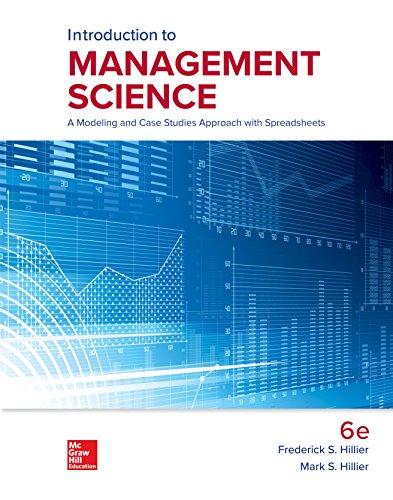Question
Based on these learner characteristics what reccommended electives will they need as a pathway to the Certificate I in Workplace Skills (Release 1)? List of
Based on these learner characteristics what reccommended electives will they need as a pathway to the Certificate I in Workplace Skills (Release 1)?
List of electives:
Group A: Numeracy units
Unit code | Unit title |
FSKNUM003 | Use whole numbers and halves for work |
FSKNUM004 | Use basic and familiar metric measurements for work |
FSKNUM005 | Use familiar 2D shapes for work |
FSKNUM006 | Use simple and highly familiar spatial information for work |
FSKNUM007 | Use simple data for work |
FSKNUM008 | Use whole numbers and simple fractions, decimals and percentages for work |
FSKNUM009 | Use familiar and simple metric measurements for work |
FSKNUM010 | Use common shapes for work |
FSKNUM011 | Use familiar and simple spatial information for work |
FSKNUM012 | Use familiar and simple data for work |
FSKNUM013 | Construct simple tables and graphs for work |
FSKNUM014 | Calculate with whole numbers and familiar fractions, decimals and percentages for work |
FSKNUM015 | Estimate, measure and calculate with routine metric measurements for work |
FSKNUM016 | Interpret, draw and construct routine 2D and 3D shapes for work |
FSKNUM017 | Use familiar and routine maps and plans for work |
FSKNUM018 | Collect data and construct routine tables and graphs for work |
FSKNUM019 | Interpret routine tables, graphs and charts and use information and data for work |
FSKNUM020 | Use familiar, routine functions of a calculator for work |
FSKNUM040 | Identify and interpret common chance events for work |
FSKNUM041 | Use chance and probability calculations for work |
Group B: Reading, writing, oral communication, learning and digital technology units
Unit code | Unit title |
FSKDIG001 | Use digital technology for short and basic workplace tasks |
FSKDIG002 | Use digital technology for routine and simple workplace tasks |
FSKDIG003 | Use digital technology for non-routine workplace tasks |
FSKLRG002 | Identify strategies to respond to short and simple workplace problems |
FSKLRG003 | Use short and simple strategies for career planning |
FSKLRG004 | Use short and simple strategies for work-related learning |
FSKLRG005 | Use strategies to plan simple workplace tasks |
FSKLRG006 | Participate in work placement |
FSKLRG007 | Use strategies to identify job opportunities |
FSKLRG009 | Use strategies to respond to routine workplace problems |
FSKLRG010 | Use routine strategies for career planning |
FSKLRG011 | Use routine strategies for work-related learning |
FSKLRG016 | Use short and simple strategies to organise highly familiar workplace tasks |
FSKLRG017 | Identify simple strategies to respond to familiar workplace problems |
FSKLRG018 | Develop a plan to organise routine workplace tasks |
FSKOCM002 | Engage in short and simple spoken exchanges at work |
FSKOCM003 | Participate in familiar spoken interactions at work |
FSKOCM004 | Use oral communication skills to participate in workplace meetings |
FSKOCM005 | Use oral communication skills for effective workplace presentations |
FSKOCM006 | Use oral communication skills to participate in workplace teams |
FSKOCM007 | Interact effectively with others at work |
FSKOCM012 | Use oral communication skills to participate in workplace negotiations |
FSKRDG002 | Read and respond to short and simple workplace signs and symbols |
FSKRDG004 | Read and respond to short and simple workplace information |
FSKRDG005 | Read and respond to simple and familiar workplace procedures |
FSKRDG006 | Read and respond to simple informal workplace texts |
FSKRDG007 | Read and respond to simple workplace information |
FSKRDG008 | Read and respond to information in routine visual and graphic texts |
FSKRDG009 | Read and respond to routine standard operating procedures |
FSKRDG010 | Read and respond to routine workplace information |
FSKWTG002 | Write short and simple workplace formatted texts |
FSKWTG003 | Write short and simple workplace information |
FSKWTG005 | Write simple workplace formatted texts |
FSKWTG006 | Write simple workplace information |
FSKWTG008 | Complete routine workplace formatted texts |
FSKWTG009 | Write routine workplace texts |
| Name | Characteristics |
| CSO1 | A 50-year-old who has no formal qualifications and only limited work experience in the family business. Oral communication is poor, and they have trouble with maths. |
| CSO2 | A 24-year-old who has had issues at school and dropped out at 14 and since then has been on welfare but is really keen to work. |
| CSO3 | A 35-year-old who has wide experience in construction but has been unable to work in that industry since experiencing a back injury 5 years ago. Doesn't understand computers well. Has average skills in language, literacy and numeracy. |
| CSO4 | A 40-year-old returning to the workforce after being at home raising children and has no computing skills. Oral communication and reading English text can be difficult. |
| CSO5 | A 20-year-old who has been unable to find employment since leaving high school. They worked part-time in retail for the 2 years prior to leaving school. Has great knowledge of social media but lacks computing skills for office work. Has basic reading and oral communication skills and low numeracy skills. |
Step by Step Solution
There are 3 Steps involved in it
Step: 1

Get Instant Access to Expert-Tailored Solutions
See step-by-step solutions with expert insights and AI powered tools for academic success
Step: 2

Step: 3

Ace Your Homework with AI
Get the answers you need in no time with our AI-driven, step-by-step assistance
Get Started


